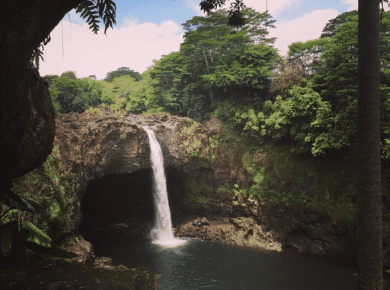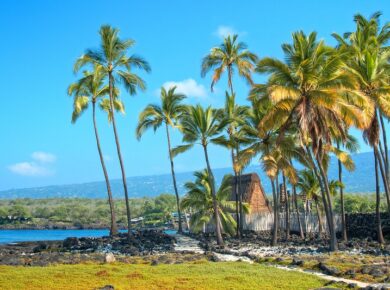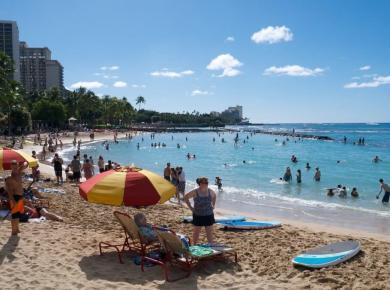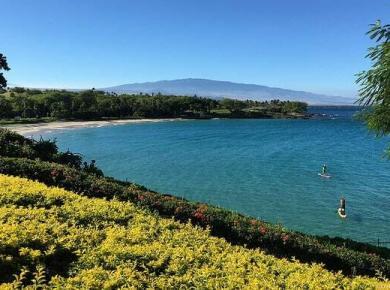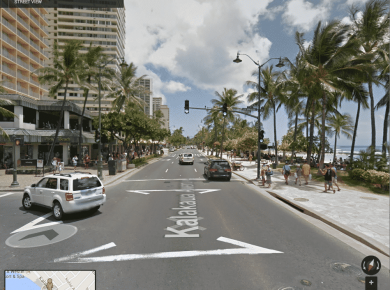The following is a guest post by Bret Love of ecotourism and environmental conservation website Green Global Travel, which you can also find on Facebook and Twitter. Brett’s trip to Hawaii, the Big Island was sponsored by the Big Island Visitors Bureau.
While other parts of Hawaii become increasingly overrun with development, Hilo remains a relatively unspoiled tropical haven of Eden-like natural abundance. The second largest city in the state, Hilo is situated on the east side of Hawaii’s Big Island, whose ecologically diverse landscape features 11 of the planet’s 13 climactic regions. As a result, agriculture remains one of the area’s most important industries, with crops ranging from coffee and macadamia nuts to fruits such as papaya and liliko’i (a.k.a. passion fruit) as crucial to the local economy as tourism. Of course, the concentration of so many natural ingredients in such a small space makes Hilo something of a food-lover’s paradise, providing plenty of options for connoisseurs looking to sample all the fresh flavors of the islands.
Have you ever dreamed of winning the Golden Ticket and taking a tour of a Willy Wonka-style chocolate factory where you could sample all the latest confectionary creations? Though Hilo’s Big Island Candies may be short on Ooompa-Loompas and chocolate waterfalls, it’s still a candy-lover’s dream come true.
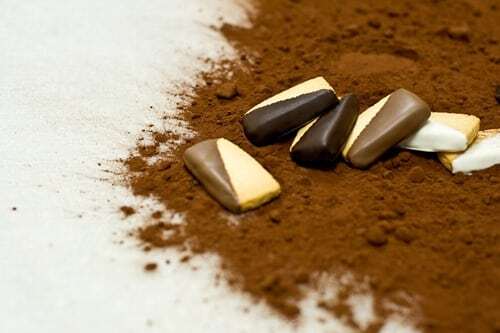
The company was established in 1977 to manufacture upscale candies and cookies using 100% Hawaii-grown macadamia nuts, Kona coffee, island eggs, real butter and top-notch chocolate, with all of their products made from scratch at their Hilo headquarters. Initially an exclusive Big Island phenomenon, the company has now gone global, racking up nearly $10 million in annual sales through upscale retail stores in Hawaii and California, as well as a booming mail-order business.
An average of 150-200 tourists a day pass through the doors of the Big Island Candies store, a small but impressive building located near the Hilo airport. Greeted at the door with a friendly “Aloha,” visitors are welcomed with complimentary coffee and samples of their delicious chocolates and cookies. Open 365 days a year, B.I.C. allows viewing of its factory operations from 8:30AM-3:45PM daily. Through large glass windows, you can view factory workers mixing and dipping by hand to create delights ranging from Macadamia Nut Biscotti and Coconut Brownies to Chocolate-Dipped Shortbreads and Chocolate Kona Coffee Beans. (For adventurous types, try a sample of Ika, a.k.a. chocolate-covered cuttlefish, a native delicacy guaranteed to be like nothing you’ve ever tasted before.)
After your tour, take some time to drool over the impressive selection in the gift shop, which includes seasonal items whose impeccable package designs often evoke images of the area’s natural beauty.
Though the coffee of the Kona region is much more world-renowned, nearly 6,000 acres of coffee trees flourished in East Hawaii in the late 1800s, until sugar emerged as a more profitable crop. With sugar recently on the decline, small coffee farms are once again thriving in Hilo’s rainforest districts of Hamakua, Ka’u and Puna. The Hilo Coffee Mill is leading the charge of the East Hawaii coffee renaissance, working with more than 40 small local farms to help them process, roast, package and market their specialty coffees.
Located approximately halfway between Hilo and Hawaii Volcanoes National Park on 24 acres of farmland offering stunning views of Mauna Loa and Mauna Kea, the mill is open to the public every Monday through Friday from 8AM-5PM. They offer complimentary educational tours showcasing the entire coffee production process, from the blossoming plants and harvested beans to the various stages of roasting and the final product, which the Mill boldly proclaims to be “Paradise In Your Cup!”
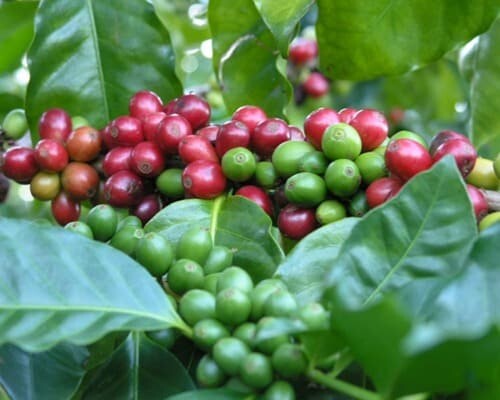
For proof that the company’s motto isn’t merely false pride, check out their Latté Da coffee and tea bar, where you can sample some of the Mill’s latest blends or savor a mug on their expansive lanai. Afterwards, peruse the quaint retail shop’s impressive range of coffees and teas (which include native Hawaiian selections, as well as blends imported from Brazil, Colombia and Nicaragua), mugs, and roasting and brewing supplies.
MAUNA LOA MACADAMIA VISTOR CENTER
With its temperate climate, semi-tropical rainforest conditions (up to 130 inches of rain a year) and rich, porous volcanic soil, the East side of Hawaii’s Big Island is ideal for growing macadamia nuts.
Mauna Loa, the world’s largest macadamia nut company, has thousands of acres of macadamia trees planted in its orchards on the slope of the majestic volcano from which it takes its name. A picturesque drive through one of those expansive orchards (which bloom from November through April, and are typically harvested 3-5 times between July and January) leads to the Mauna Loa Visitor Center, which includes a nut processing and chocolate processing plant, gift shop and snack bar that are open to the public daily from 8:30AM to 5:30PM.

Before it can make it onto supermarket shelves, each macadamia nut must have its fibrous green outer husk removed, be dried for 10 days to ensure a moisture content of only 1.5%, have its tough shell cracked by rotating steel rollers that apply 300 pounds per square inch of pressure, go through a 4-step separation process to get to the precious nutmeat inside, get dry roasted, then sorted by hand to assure quality and vacuum-sealed to ensure freshness. The processing center features numerous second-floor observation windows from which visitors can observe every step of this complex process, as well as video monitors explaining each step along the way.
Inside the visitor center is a gift shop featuring every macadamia nut-related item you could ever dream of (not to mention a few you’d never imagine), as well as samples of everything from wasabi-flavored nuts to chocolate-dipped macadamia nut cookies. And if your tour has left you with a hunger a few samples can’t quite satisfy, swing by their snack bar and try their AMAZING macadamia nut ice cream. –Bret Love

